Autonomous transport systems can benefit both society and the climate
WORKSHOP REPORT
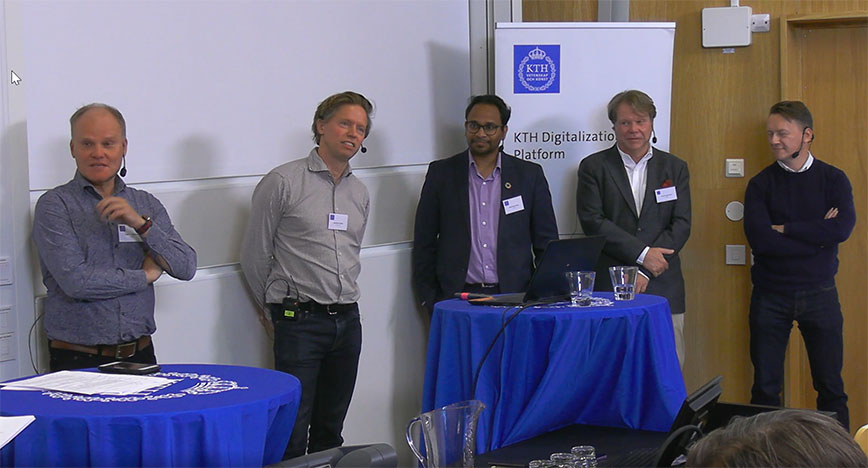
20 September 2022 saw the network event entitled "Autonomous transportation – Challenge in digitalisation and solution to sustainability?" at KTH Campus. Attended by researchers and representatives of the commercial and government sectors, the event included presentations and discussions on the challenges and opportunities in this field.
The day kicked off with Tobias Oechtering, Director of the KTH Digitalisation Platform , and Magnus Burman, Director of the KTH Transport Platform , welcoming all those taking part, both physically and online. They also introduced co-organisers Fordonsdalen , represented by Sofia Wiesenfors, and the European Regional Development Fund.
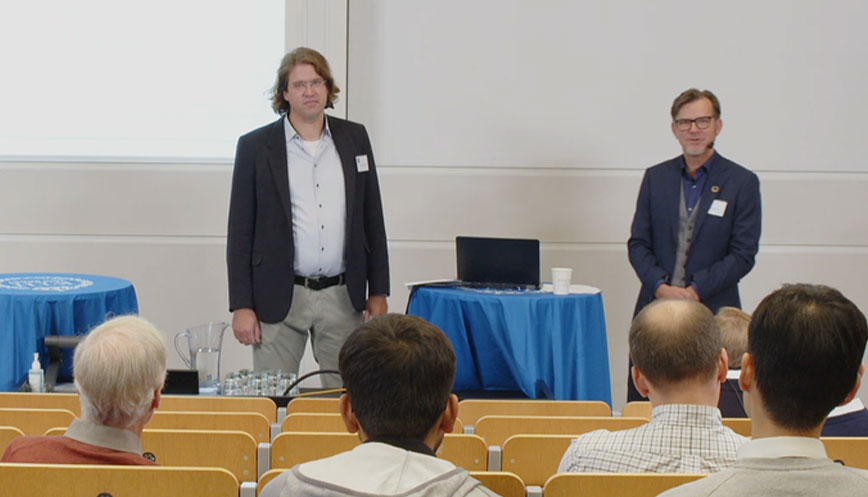
“The aim today is to exchange ideas and discuss challenges in the field and how we can achieve sustainable development – something that can only happen if the various organisations here today work together. Therefore, I would encourage everybody to chat and network during the breaks,” said Oechtering.
Magnus Burman told the KTH researchers in attendance that seed funding is available in the event’s theme area, and that information can be found on the KTH intranet . He then ran through the day’s programme and handed over to the first speaker.
Future focus areas and societal challenges
In the day’s first session, Olof Johansson, Programme Manager at the Swedish Transport Administration (STA), presented the updated roadmap for a digitalised road transport system presented by the STA in April 2022. Johansson explained that the aim of the roadmap is to stake out a general direction for developments and indicate areas where digitalisation can bolster these developments and create benefits. A new roadmap may be launched as and when required since digitalisation is a fast-evolving field.
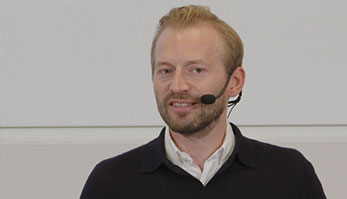
“When we talk about digitalisation, we refer to both industrial as well as national and regional development relating to the road transport system. The roadmap encompasses seven clusters of areas for road and rail transport, but today we’re specifically focusing on road transport. The new roadmap differs from the one in 2019 because it has a broader perspective. There is a greater focus on opportunities for using data for planning, operation and maintenance. But shorter-term benefits are also part of the roadmap,” said Johansson.
Johansson reminded listeners that the STA is also a major financier of research and that the scope and focus areas of the roadmap will largely guide how these funds are allocated.
One of the new ‘action clusters’ in the STA’s roadmap involves digital ‘trimming measures’. Is it, for example, possible to introduce digital ‘speed groups’ for certain types of transportation on certain stretches of road? Another action cluster relates to the condition of the infrastructure, e.g. the possibility of achieving effective winter maintenance supported by vehicle data. Johansson said that these are examples of large-scale collaborations that allow access to new data sources.
Geofencing to create safer traffic environments
Further examples he gave from the roadmap included geofencing, which can be used to create better, safer traffic environments by influencing driver behaviour in particular geographical areas. This could be reducing the vehicle’s speed, switching to electric power, and so on.
“We’re also looking at user cases. In rural areas, it could be too expensive to convert a road, so instead, we can use digitalisation to impose restrictions on how it’s used. We’re also looking at how we can use new technology to give train warnings at unattended level crossings,” said Johansson.
Johansson went on to say that the STA is currently building up a data lab for planning. It will reveal where in the system there are dangerous bends or road sections, as well as other important data. He also mentioned a less obvious application for the data lab: preventing the spread of lupins, which may be beautiful but are harmful to the road environment:
“When we build, we don’t want to use filler from areas where lupins grow. Using data analyses, we can limit the spread of this invasive species. This shows just what a broad application the data lab has.”
Another area where the data lab can help relates to cycling. As new electric bikes become increasingly popular, planning for commuting on cycle paths needs to be developed.
Six focus areas in the roadmap
The roadmap for a digitalised road transport system encompasses six focus areas, which also expand on the STA’s standpoint on central areas.
“What do the new vehicles signify for the physical road infrastructure? Autonomous vehicles need to interact with the existing environment, understand winter conditions, and see children and emergency vehicles in the vicinity. What can and should we at the STA do? We need to be smart as resources are limited. One of our standpoints here, therefore, is that we always assume the intelligence is primarily in the vehicles and not in the infrastructure.”
The Q&A session afterwards highlighted the matter of the Transport Administration’s role in these developments. The answer was that if there is a market for a particular development, it should drive that development. After that, the STA may choose to focus on areas that need developing where there is no market impetus.
One question related to road markings and whether the Administration will standardise these when autonomous vehicles need to be able to detect them. The STA replied that it is looking at a standard that works for both humans and technology. Other questions related to the importance of cybersecurity as the road transport system is digitalised, and how researchers can access more data.
Altered traffic behaviours
Gabriella Nilsson, head of the analysis department at Region Stockholm’s Public Transport Administration, then spoke about altered traffic behaviours. She said that an increase in traffic was evident in all transport systems worldwide. For Stockholm, this entails a challenge and greater costs. Two other megatrends are the accelerating digitalisation of society and the ongoing fragmentation and individualisation of lifestyles.
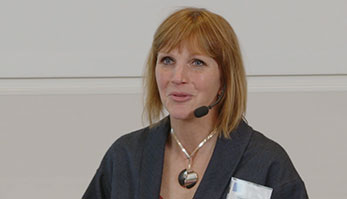
“Many transport users today face the choice of whether they even need to travel at all, as more and more people can work remotely. There are also different approaches to using public transport, and these can vary between different cities. In Stockholm, people like to be dressed up if they’re using public transport to go out and have fun, but that might be different in other parts of Sweden. Five per cent of transport users prefer not to travel at all during rush hours,” Nilsson explained.
She ran through how travel patterns changed during the pandemic, how travel by public transport initially fell while driving increased, as did walking and cycling. As the pandemic eased, travel by public transport increased again, but overall, travelling by car has risen slightly since the beginning of the pandemic.
“There is still a migration in towards Stockholm, even though some people have instead opted to remain living outside of the central areas. A lot of people also commute from other regions, so we’re looking at how rail-bound services can work better across regional boundaries,” Gabriella Nilsson concluded.
Favouring cycling and walking
Maria Xylia, a Research Fellow, focusing on energy systems at the Stockholm Environment Institute (SEI), talked about the significance of electrification to the global Sustainable Development Goals. One basic premise is that we need to reduce motoring in favour primarily of cycling and walking, and then public transport. Another important question is what role automated transportation has to play in this.
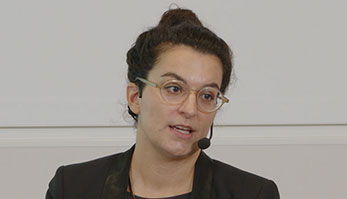
“The forces affecting the development are electrification, automation and digitalisation, including the sharing economy, and these all work together. We have drawn up three scenarios: ‘the bad one’ with development leading to more cars, ‘the futuristic one’ which is completely sustainable, and what we call ‘the realistic one’. Number three is mid-level sustainable and could be apparent in the near future. The key here is incremental improvements, micromobility, and optimisation through automation of transportation and logistics. This is happening now, pending more long-term solutions,” Xylia explained.
She talked about how the various forces affect inhabitants in a community, e.g. transport workers’ view of their work, where the challenges are for them and how they view technological changes. She finished off by highlighting the uncertainties that exist and constitute a threat in the area of mobility: energy prices, material availability, global imbalances, proprietary software, data sharing and social inequality.
Securing access to data
Platform Director Tobias Oechtering then asked all the speakers how we can secure access to data in order to develop the field of transport.
Olof Johansson said that the Swedish Transport Administration would like all the data it provides to be shareable and all data that can be open, to be open. The STA is talking to the industry about how this might be feasible. He said that the Administration is considering whether it ought to have a data domain, like the one belonging to the Swedish Land Survey, and is discussing this with the Agency for Digital Government and others.
Gabriella Nilsson said that Region Stockholm has its transport lab and places all the data it can on this platform. It is also working with other players on how this data can be made available.
“We have so much data within the region, and it’s only increasing as new vehicles enter the system. So we have begun organising data in new ways. I would, however, like to see more analyses of what can be achieved with data, which questions are worth asking regarding different kinds of data – and transport users are an important starting point,” Nilsson explained.
Olof Johansson pointed out that legislation is also an important aspect of development in which the STA is involved. New technology creates challenges to our view of society, and legislators need to understand the technology too.
“A good example of this latter is the new hydrofoils that have been developed. They don’t make a disturbing swell on the water in the archipelago, so they should be able to be exempted from the speed restrictions that apply to the marine craft of other designs,” said Gabriella Nilsson.
Needs and solutions
Following a break for coffee, it was time for the business sector to share its views on the development of autonomous transportation.
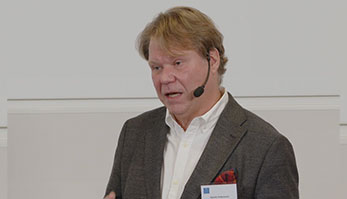
The first to speak was Henrik Petterson of Scania, who talked about the many new capabilities an autonomous vehicle needs, such as detection, localisation, map-reading, situational assessment, movement planning and activation, all of which are connected to digital solutions.
“There’s a big difference between a vehicle operating in a mining environment and one moving around in a city. In a mine, the environment is closely controlled, while cities are far more complex, with many different types of potential scenarios the vehicle has to be able to handle. There are a lot more solutions to research and find. One of the key issues is the vehicle’s ability to interact with other vehicles and get them moving at speeds that don’t create disruptions. It’s also important that the vehicles receive information about more than what they themselves can perceive and register, i.e. what’s immediately visible. For example, information about what could happen further along a road or around a corner,” Petterson explained.
He went on to give examples of the areas Scania is researching to make characteristics like these work in autonomous vehicles.
5G created the biggest innovation platform on Earth
Håkan Olofsson of Ericsson spoke on the subject of 5G and how this infrastructure is both driving and helping to evolve autonomous vehicles and transport systems. He says that the transformation the transport system is undergoing can be defined as CARE: Connected, Automated, Redefined and Electric.

“The first two years of 5G created the biggest innovation platform on Earth. Today it constitutes critical infrastructure for everything from police communication to automation of logistics functions in ports. In the field of transport, including autonomous vehicles, 5G is a service enabler. The majority of 5G is also market-led; it is not driven by government funding, or only to a very small extent anyway. The vehicles are now being redefined, and 5G is becoming a component since cloud services are increasingly pivotal to their altered functionality,” Olofsson explained.
He emphasised the importance of continued collaboration between academia and industry. The people who know about 5G and digital infrastructure are not experts in vehicles and transport systems and vice versa.
An electric, autonomous and digital transport system
Rein Jüriado of Einride talked about the company and its vision to create a transport system that is electric, autonomous and digital.
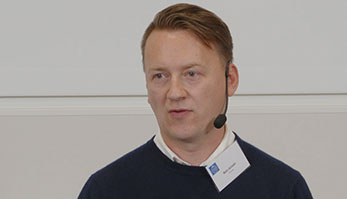
“Heavy transport is harmful to the environment and dangerous to humans. At Einride, we wondered whether we could re-invent the transport system by making it electrified and autonomous. Today, Einride manages the largest electrified vehicle fleet in Europe, with proprietary vehicles and software,” said Jüriado.
He explained that autonomous vehicles also make transportation cheaper, as they eliminate the need for drivers. Instead, the vehicle is monitored remotely by an operator.
“Another, broader sustainability perspective arises here. There is a shortage of drivers today, and with autonomous vehicle systems we can instead recruit office staff who work with transport, which means we can bring brand new people into the transport sector,” said Jüriado.
Places mobile cameras in vehicles
Jonathan Selbie of Univrses presented his company’s disruptive method of using computer vision by processing images from mobile cameras on ordinary vehicles in live traffic.
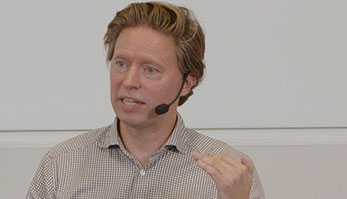
“Today, there are 24 megacities, and 66 per cent of everyone on Earth lives in a city. This increases the demand for transport services, but at the same time, much of the capacity in cities is taken up by drivers looking for somewhere to park. Emissions are increasing, and the roads too are taking a beating from all the traffic. Autonomous vehicles can solve a lot of these problems, and computer vision is a key technology in managing the transition,” Selbie explained.
Univrses places mobile cameras in vehicles and uses them to harvest data from the traffic environment in real-time. This includes road surface damage, traffic flows, free parking spaces, and so on – data that government agencies and other players can use in their planning.
“We can also produce 3D images based on the harvested images and create 3D twins of cities. We can collect data about how many people missed the bus at a stop at a certain time and much more. The system anonymises number plates and faces when it gathers data, thus ensuring privacy.”
Univrses is working with KTH’s ITRL (Integrated Transport Research Lab) on a project looking at, among other things, how many vehicles are needed to ensure that the collected data covers the needs of different kinds of information services.
Optimising vehicle use
Ravi Kiran-Kotty of PostNord talked about the company’s digital transformation in its logistics chain.
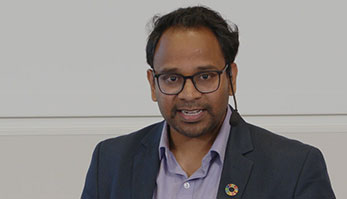
“We have a far-reaching operation that requires environmental responsibility. For example, we want to reduce the number of kilometres we drive, optimise our network structure, and make more of the opportunities offered by green technology. It is largely about optimising vehicle use, which may require different vehicles to the ones we have now. Our digital transformation includes technologies such as IoT, AI and automation, but also autonomous vehicles, control towers and digital twins. For PostNord too, it is important to be able to communicate with the transport system in its entirety, for example, regarding road surface damage, if we are to optimise our transportation,” explained Ravi Kiran-Kotty.
He also expanded on the benefits of a linked transport flow, e.g. the ability to track KPIs in real-time and the potential to further reduce emissions. PostNord aims to have a fossil-free operation across the Nordics by 2030.
Conditions for transport system evolution
The subsequent panel discussion looked at the conditions necessary for the ongoing evolution of the transport system, such as access to data and the design of infrastructure, as well as who should be responsible for it.
The importance of the EU and its work on transportation and digitalisation were mentioned; Sweden cannot simply design its own systems and regulations. The participants also highlighted the vulnerability that comes with increasingly digital technology and the sharing of data between many different parties and agencies.
When asked about the main obstacles to sustainable transportation, the panel mentioned connected and interconnected vehicles, more action (also on the business side), the scalability of solutions, risk management, open standards and interoperability.
The contribution of academic research
The stage was handed over to Magnus Burman, who led a session revitalising exercise, after which the research directors were asked to present their various competence centres and explain how they relate to autonomous and sustainable transportation.

TRENoP was presented by Mikael Nybacka as a Strategic Research Area (SRA) focusing on innovation, intelligent decision support and implementation paths. He also gave examples of how the centre is working in the field of autonomous transportation.
James Gross and Gyözö Gidofalvi talked about Digital Futures, another SRA. Digital Futures is the biggest initiative in Sweden for research focusing on digitalisation that solves important societal challenges, including autonomous transportation.
Jonas Mårtensson spoke about ITRL, research into autonomous transport systems, and the vision of creating an open test bed for smart transport systems at KTH Campus alongside other players.
Nicole Kringos talked about Road2Science and how this competence centre is working alongside partners in the business sector to bridge the gaps between the academic sphere and industry in the area of transport infrastructure.
Francesco Fuso-Nerini presented the Climate Action Centre – an interdisciplinary research centre focusing on collaborations that contribute to reduced climate impact and adaptation to the UN’s Sustainable Development Goals.
Lunch discussions and summation
During the lunch break, there were chats and discussions in different rooms based on pre-set themes. Topics covered everything from current research collaborations to how future regulations affect the development of autonomous vehicles.
After that, Tobias Oechtering and Magnus Burman thanked all the speakers and participants and summed up the day. They finished off with a reminder that a number of researchers and industry representatives had recently written a joint debate article calling for clearer yet also stricter environmental legislation – something which they said would have a positive impact on opportunities for the academic sphere and the business community.
“The EU has indicated that the lack of skills in ICT represents a serious threat. But here in Mälardalen we have the skills, the collaboration and the commitment. There is therefore great potential for us to achieve success in the field of autonomous vehicles as we combine our expertise in ICT and transport. So let us go forward and develop this collaboration!”
Text: Håkan Sandberg
